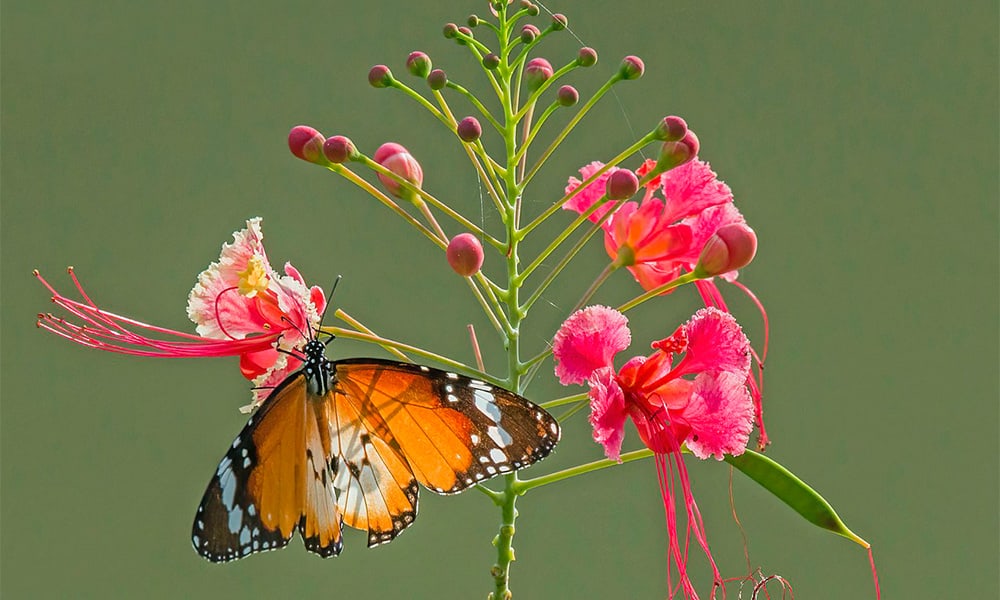Here’s another attractive ornamental that’s a favorite Costa Rican backyard patio shrub. You’ll find malinche (Caesalpinia pulcherrima) growing in just about any barrio in the country. Its unmistakable bright red or yellow flowers resemble those of the giant poinciana trees, and so it’s called dwarf poinciana in English. Other common names include Barbados fence flower and paradise flower. Costa Ricans call it hoja sen or clavelina.
Malinche is a native plant of Mesoamerica that is now found around the world in tropical regions. This hardy shrub-like tree grows to no more than 5 meters but is usually pruned to maintain a compact shape for border hedges. The leaves are double-pinnate, and the stems usually have small thorns. The beautiful flowers bloom most of the year and attract hummingbirds and butterflies to the garden.
Leading nurseries often carry malinche, but you also can collect seeds from local plants or start cuttings. The seeds can be planted in recycled plastic cups with several holes punched in the bottom and filled with prepared potting soil.
It takes about two weeks for the seeds to germinate, and another month or two before the young plants are ready for transplanting to the garden, preferably in full-sun locations. Cuttings can be started in cups and take about the same time. Rooting preparations help stimulate root growth and speed up the process.
Malinche grows in poor soils but responds well to additions of organic compost fertilizer for better growth and flowering. As the plants reach about a meter tall, pinch the leading new growth of each stem to form a compact, bush-like shape.
Malinche is a hardy ornamental that has no serious insect problems or plant diseases, and it does not need watering in the dry season. These attributes place it high on the list of eco-friendly garden plants. And it has several other beneficial uses.
A small handful of the leaves can be used in an infusion of 1 cup of boiling water as a laxative and to reduce fevers, while the same amount of flowers in an infusion promotes menstruation. The leaves can also be used as a maceration to treat insect bites and skin conditions, such as fungal and bacterial infections or rashes. The roots and seedpods produce a red dye, and the dried flowers soaked in water act as a natural insect repellent.
As you can see, malinche offers much more than attractive flowers around the home. It’s a multipurpose plant that has become a beloved friend to many a Costa Rican. Will you, too, invite this new friend into your garden?






